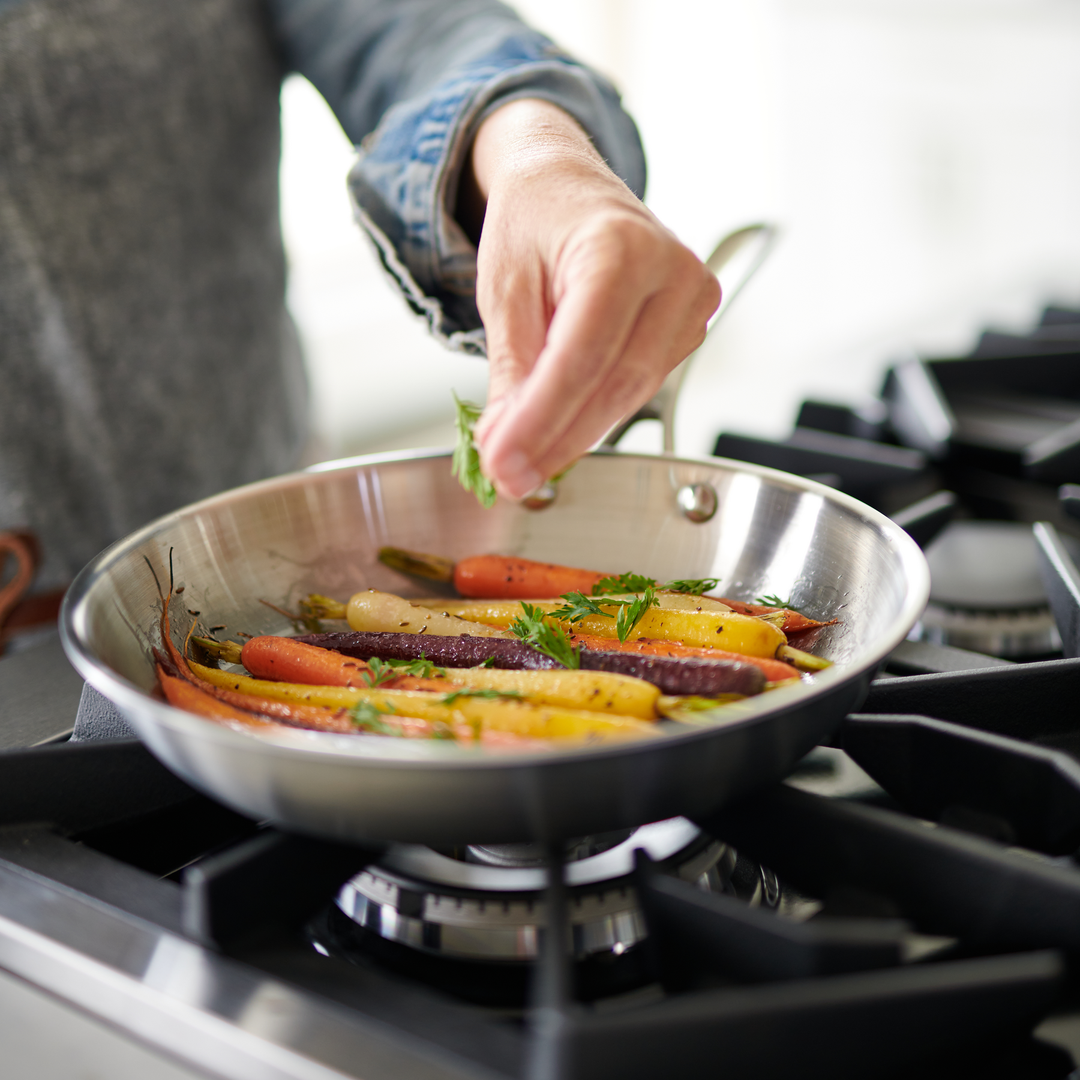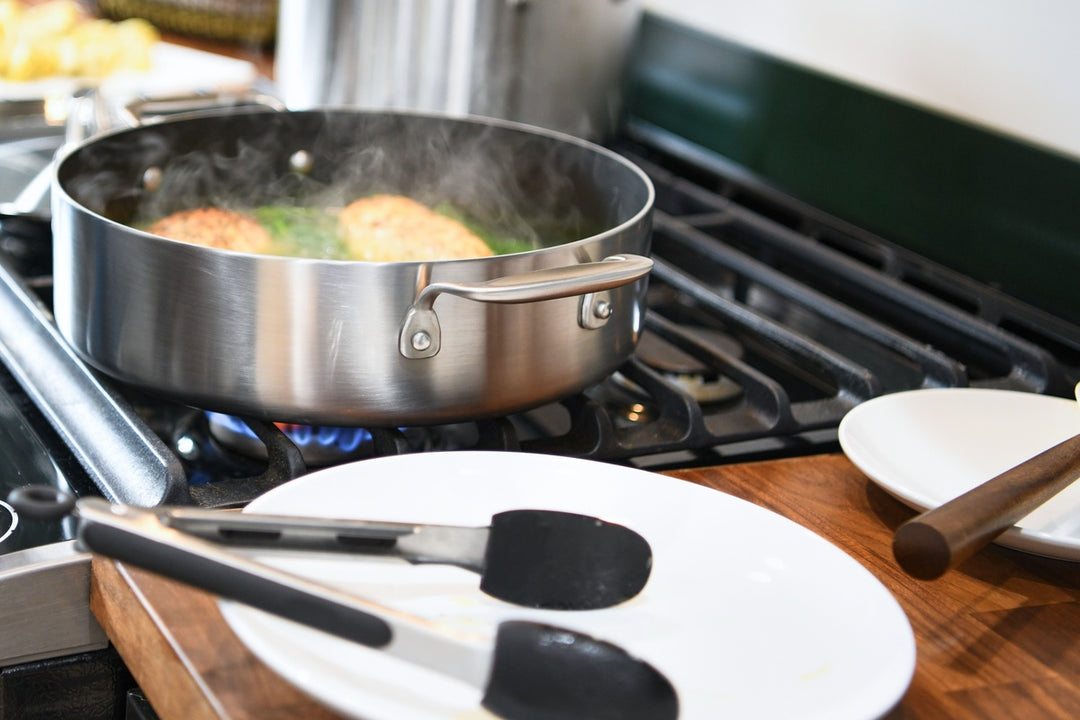When to Replace Cookware

You’ve had your cookware and you’ve loved your cookware for a while. It has reliably helped you try out new dishes and whip up old favorite meals for ages. But it has begun to show wear and tear. You know there are some things you can do to clean, repair, and extend the life of your favorite nonstick and stainless steel pans, but when do you need to replace it? Read up on our reliable industry replacement guidelines.
Common Cookware Problems: Warping, Loose Handles, Weak Joints
-
Weak Excessive heat can cause cookware to twist out of shape, or warp. You can check if your pot or pan has warped by simply setting it on a flat surface. If the pan rocks, it has likely rounded or warped. This rounding can cause cooking hot spots because the pan can no longer retain full contact with a heat source and food may burn.
-
Weak or loose joints on a pan can allow liquid to leak out while cooking. Carefully examine all handles and rivets.
VERDICT: Either scenario creates a good case for a replacement.
When Should I Replace My Nonstick Pan?
A few minor scratches on nonstick coating is expected over the life of a pan, even if you follow proper nonstick cookware use and care. If your nonstick pan or bakeware is extremely scratched and/or the nonstick coating is beginning to chip off, not only will food begin to stick to the pan, but bits of the coating will mix in with your food.
VERDICT: It’s time to let that pan go.
Should I Replace My Stainless Steel Pan?
Modern stainless steel pans are a compilation of stainless exteriors and aluminum or copper centers. You can maintain the sheen and effectiveness through proper stainless steel care, but if the core is beginning to peek through the stainless it can react with certain acidic foods, like tomato sauce, causing discoloration.
VERDICT: It is time to source a replacement pan.
Time to Cast Out My Cast Iron?
Battling rust on your cast iron pans with vinegar, steel wool and dish soap to no avail? Excessive rust can result from a pan constructed from miscellaneous metals. And no one wants to eat rust.
VERDICT: Add a new pan to your list.
How Long Should I Keep My Enamel Cast Iron Pot?
Over time, chips will occur in the enamel at the top of lined cookware. Those aren’t too troubling, but once the enamel starts flaking along the bottom or sides where you stir or scrape, it will continue to fragment and can get into your food.
VERDICT: The pan should be retired.
Can I Make My Cookware Last?
All cookware should come with instructions for proper maintenance to get the longest return on your investment. American Kitchen offers a limited lifetime warranty to cover your cookware investment. Be sure to check your options for repair or replacement before discarding your existing cookware.
Beyond the physical cookware aspects that can compromise cooking, consider these questions:
-
Are the exterior surfaces of your cookware dented or discolored?
-
Is your pot and pan collection mismatched?
-
Does the style of your cookware clash with your kitchen?
-
Do you find yourself using pans that are too big or too small for your needs?
-
Do you use one cookware piece more than any other?
-
Does your cookware dampen your joy of cooking?
If you answered ‘yes’ to one or more of these questions, you could be ready to invest in a piece of new non-stick or stainless steel cookware or a cookware set. We know replacing or upgrading cookware can be time-consuming, expensive and stressful. Check out our cookware knowledge resource to find the best cookware for your needs, whether you’re a fledgling foodie or a seasoned pro!




